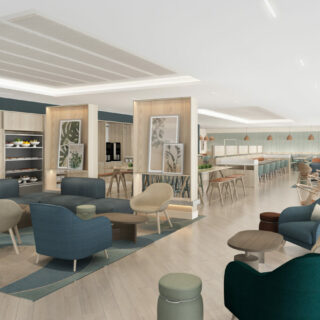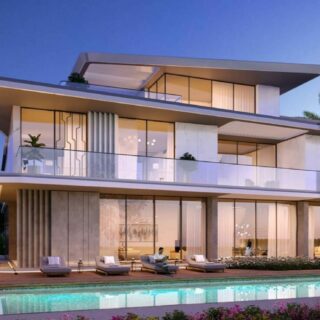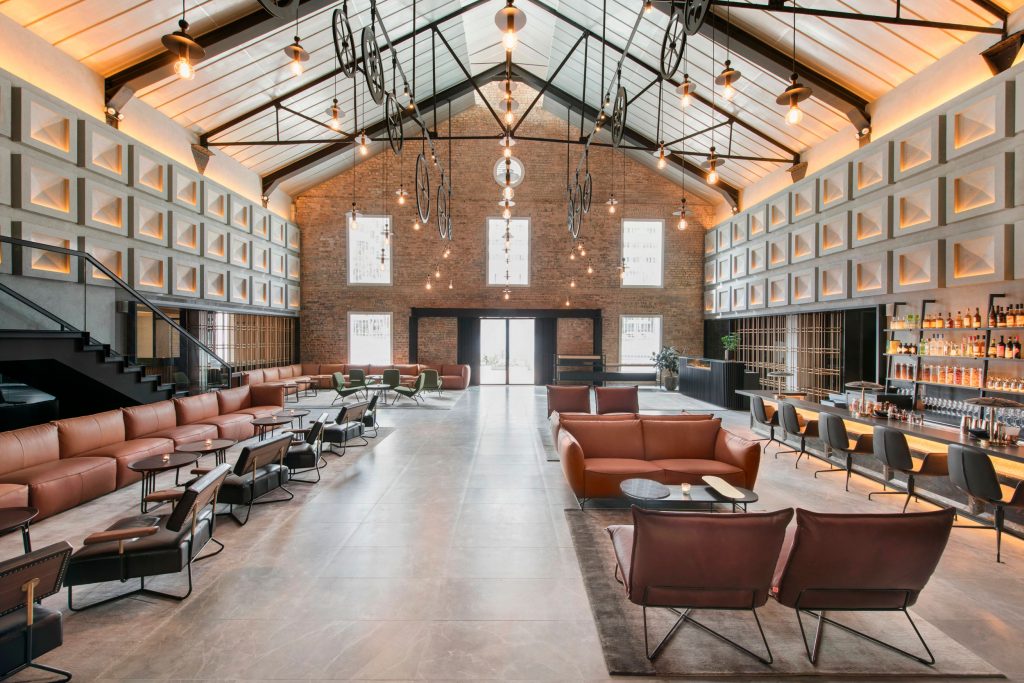
We all know the importance of first impressions. From meeting a new colleague to arriving in an unknown city, the impact of the first few seconds cannot be overestimated and sets the tone for the long-term relationship.
As we have previously discussed, the hotel lobby is paramount in creating a guest’s initial impression with award-winning designer Douglas Nysse reporting that, “If you lose them at the beginning, it is very hard to recover. In their mind, they’ve decided it is a bad hotel”.
With this in mind there is a huge amount of pressure resting on the lobby layout; not only should the guest feel welcomed by the space and reassured that they have chosen the right accommodation, but the lobby should also convey an immediate sense of the brand and outline the kind of experience the guest should expect. The lobby can be considered the staging area for everything that goes on in a hotel and, as such, it’s the best opportunity to address the guests’ needs and to ensure their expectations are met.
With every sense involved in formulating the initial opinion of a hotel, there are a number of key areas that must be considered in order to ensure that this is a positive one and accurately represents the experience that is to come. From the right lighting scheme to the efficiency of layout, we are exploring nine of the essentials of hotel lobby design.
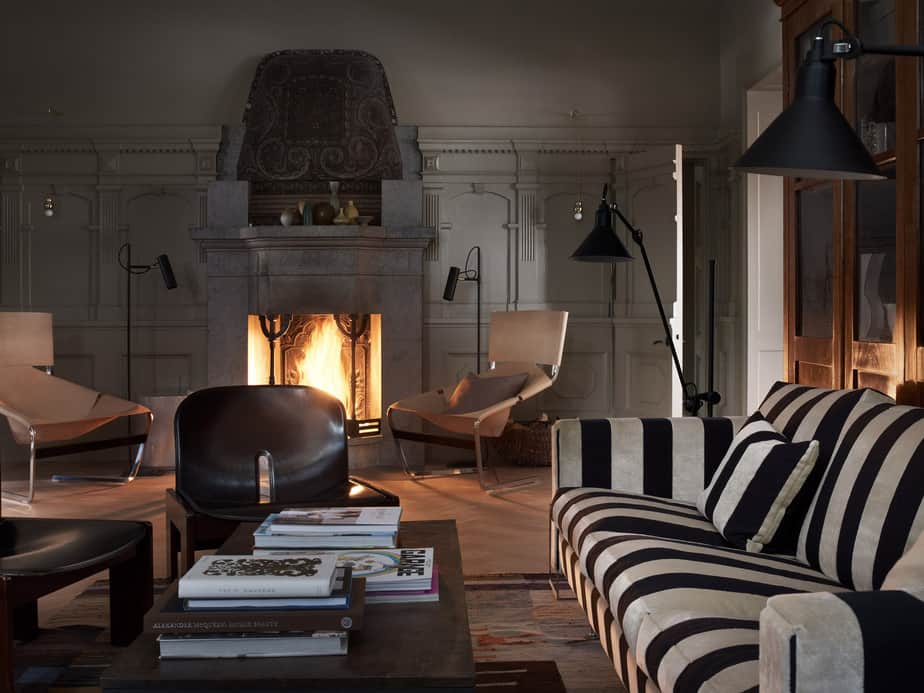
01. Scale
As hotel guests’ behaviours shift, with people spending less time in their rooms and more time in the communal spaces, there has been a change to the way hotels are proportioned. In many hotels, the communal spaces have grown significantly in size in order to accommodate additional amenities and create additional revenue opportunities. These may include cafes, shops and even pop up restaurants that appeal to today’s millennial traveller. “[The lobby] is an extension of the [guestroom] and of the city,” says Dimitri Antonopoulos, VP of Restaurants and Development at Antonopoulos Group. “It’s important that lobbies and bars are the kind of place that you want to go out to or spend time in.”
In many hotels, this increase in lobby size has led to a reduction in the average room size. This has, in turn, facilitated a rise in occupancy opportunities, making the available space work harder and drive additional profits.
“[The lobby] is an extension of the [guestroom] and of the city,”
DIMITRI ANTONOPOULOS
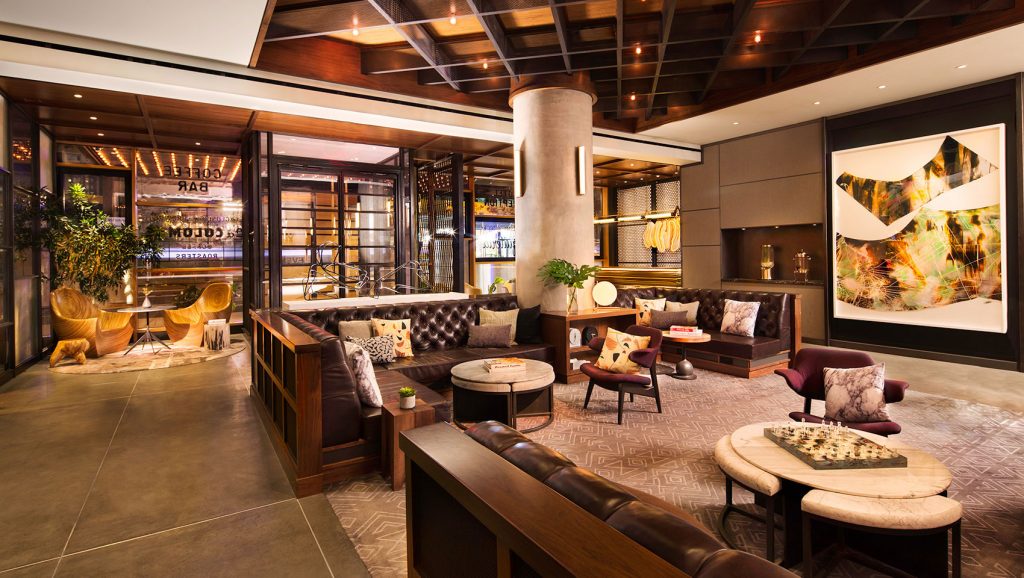
02. Design Strategy
Today, the lobby is the hardest working space in the hotel and the design strategy behind it must have the needs of the guest at its heart. It is essential that the lobby provides the perfect balance between form and function as it strives to offer a showstopping space that will create the best possible first impression while performing a number of crucial tasks.
From checking in to informal business meetings, the hotel lobby has become a multifunctional space that is as versatile as it is stylish. However, the role the lobby plays in each individual hotel is entirely down to the guests and their requirements. Do they need a space to work remotely with high speed internet access and wireless printing facilities? Or are the majority of the guests couples on romantic getaways who are looking for an opulent space to relax and enjoy each others company? These are the kinds of questions that will inform the overall design strategy and lead to a successful space.
By developing a design strategy that fits perfectly with the clientele, it is possible to create a lobby that builds a sense of community and enhances the hotel’s overall ethos and develops the character of the brand. In doing so, it also cements the hotel and the experience into the mind of the guest, turning them into loyal customers and brand ambassadors.

03. Zoning
Whereas the hotel lobby was once a space that served as the entrance to the rest of the hotel and an access point to the main functions of the venue that guests would simply pass through, it is now evolving into something altogether more sophisticated.
In recent years we have seen a clear shift from the traditional dominating front desks to lobbies that have split uses. From lively social spaces to co-working zones, meeting areas, casual dining and open-plan bars, the lobby is now the beating heart of the hotel. Increasingly designed in order to entice guests out of their individual rooms and into a sociable hub, the pressure is on for these spaces to perform a wide variety of duties. In order to pull this off successfully, zoning is essential.
By creating dedicated zones that flow seamlessly together, you are ensuring that each of the functions that you require your lobby to fulfil are given the space to do so. By strategically laying out furnishings and using devices such as sound absorbent panels, one lobby can offer everything a guest needs, from a place to check-in to an area to enjoy a meal.
The commercial benefits of creating a space that successfully performs all of these roles are clear to see. Rather than working from a coffee shop or hosting meetings in a dedicated co-working venue, guests can instead choose to remain at their accommodation, thus keeping any food and beverage revenue within the hotel. On top of this, offering an enhanced experience that provides the ultimate convenience increases the likelihood of repeat custom and positive reviews.
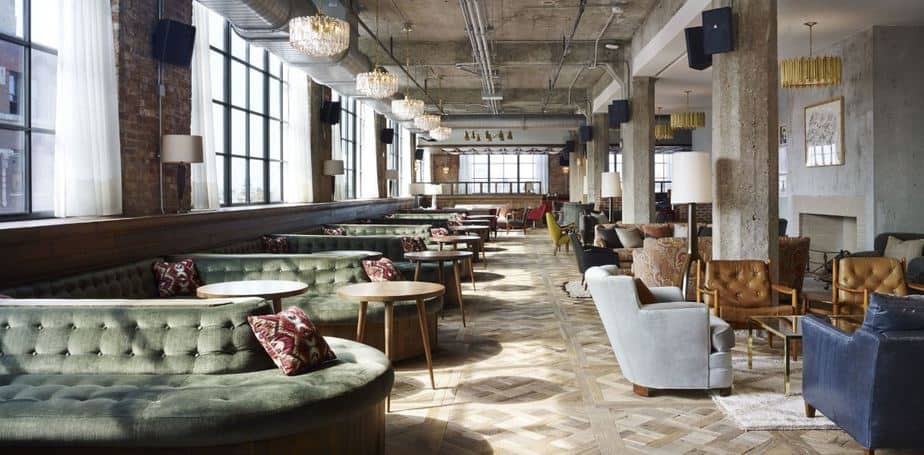
04. Sensory experiences
Impressions are formed using all senses and this needs to be considered carefully within the design strategy. By creating a lobby that appeals to more than just the eye, an inviting ambiance is developed which will encourage the guest to engage with space and the brand.
The sense of smell is closely linked to emotions and also to memory and so this is an important area to tap into. Creating a pleasing aroma in the lobby can have a significant impact on consumer behavior and so the kind of scent that is used should closely relate to the overall experience that you are seeking to offer.
According to a Bloomberg report, in 2015 hotels spend $300 million in the scent branding industry and this figure is predicted to continue to rise. Some of the most popular scents used within hotel lobbies and corridors included green tea and lemongrass which Air-Scent International claim evokes memories of warm nights and sparkling waters. White tea and thyme is also a popular combination with its incense-inspired aroma and clean, crisp edge.
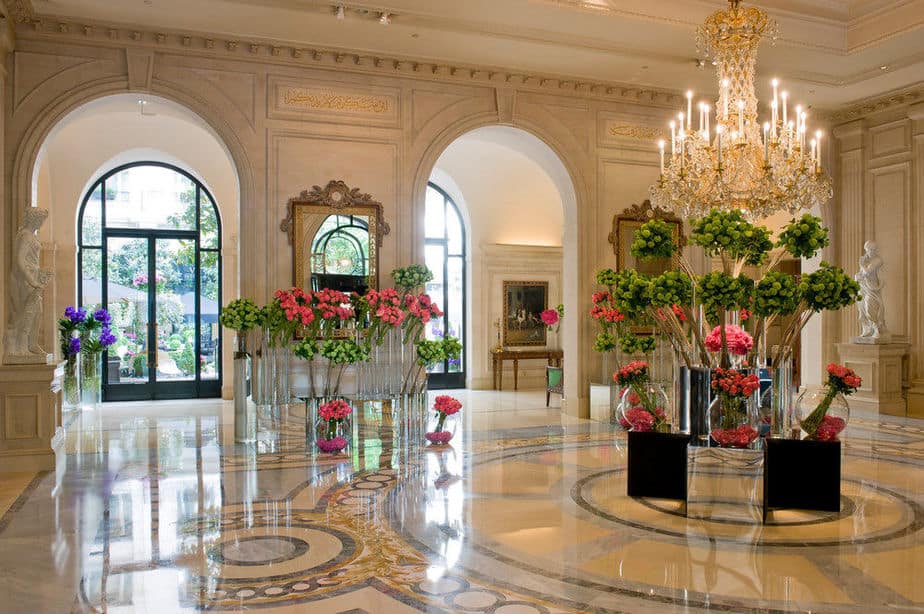
05. Lighting
The way in which a space is lit has a dramatic impact on our initial impressions and on our emotional response to it. Too bright and the space can feel clinical and uninviting, too dark and it may appear dingy and small.
In today’s multifunctional lobby, one lighting scheme may not be enough to make the whole space work and so this needs additional consideration. Working spaces will require functional task lighting that ensures guests are not forced to strain their eyes to read and that does not cause glare on computer screens. Conversely, social spaces require a more ambient lighting scheme that encourages guests to relax and enjoy their surroundings. As such, lighting is a crucial part of the overall design strategy and must be considered early in the process.
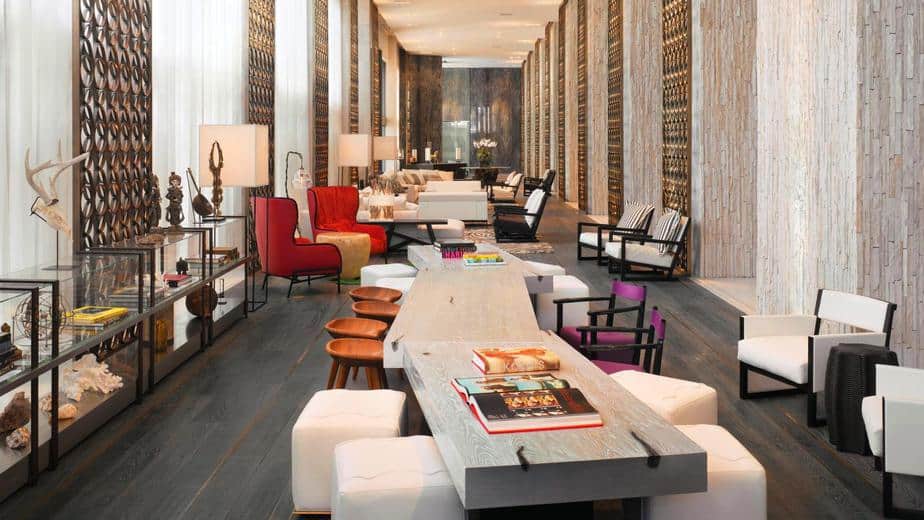
06. Sound, Music, and Entertainment
The sounds and entertainment in a lobby are also important to consider and this goes beyond creating a playlist your guests will love, the overall acoustics of the space must be raised early in the design process. Loud lobbies may give guests the impression that a good night’s sleep isn’t on the cards while silent spaces can be difficult to fully relax in. Carpeting and soft furnishings can be used to diffuse sound and prevent a space from feeling echoey, and noise control materials can also be incorporated into wall coverings and flooring.
The sounds and entertainment in the lobby should align with the needs and agendas of the guests. A hotel with a relaxing spa may benefit from a gently bubbling water feature that puts guests in mind of unwinding while a business hotel might offer a bank of screens showing daily news updates and stock market fluctuations. Hotels that regularly cater for families with small children may consider an area that encourages children to engage with interactive technology thus allowing parents to check-in with ease.
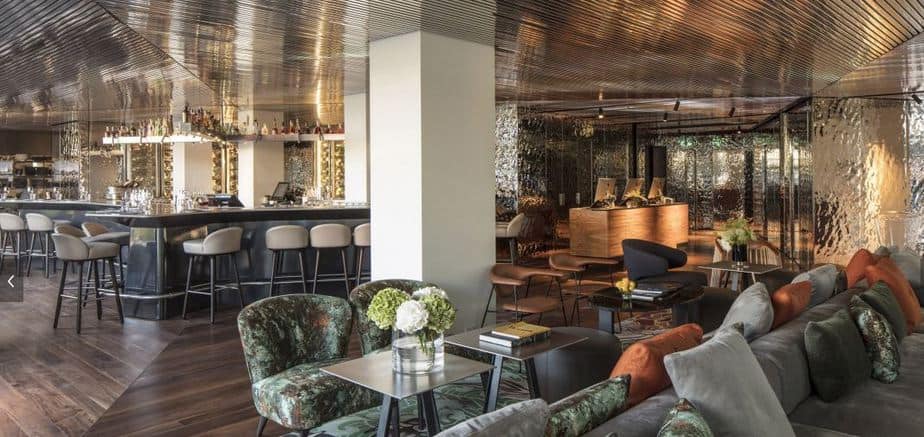
07. Style and Furnishings
As well as being an integral component to the overall look and feel of the hotel lobby, the furnishings will make or break the success of each of the zones that are being created. From luxurious sofas on which guests can relax with a cup of coffee to desk areas that are ergonomically designed to ensure the most comfortable co-working space possible, it is important that the pieces chosen not only enhance the style of the space, but also its functionality.
Lobby furnishings should encourage collaboration and offer guests the chance to create groups of seating that work for them. It is also important to consider that one style of seating may not work for all of the functions that you wish the lobby to perform and so many options may be needed. Barbara Best-Santos, associate principal of ForrestPerkins points out that; “Today’s lobbies are true ‘great-room’ environments that are activated through varied seating options and live/eat/work-inspired spaces.”
The Mandarin Oriental Hotel in Barcelona showcases this perfectly with a number of grouped seating areas that make it easy and comfortable to communicate. Seating with high backs also helps to shield the groups to create a feeling of separate areas without them being entirely cut off.
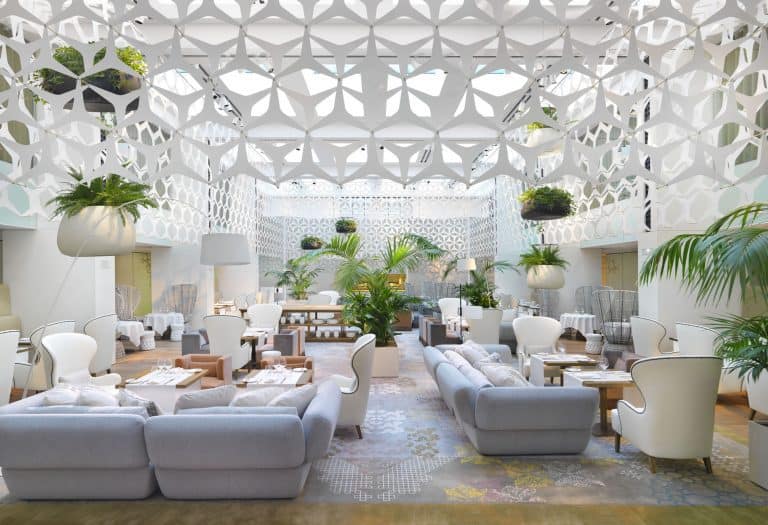
08. Biophilia
As people automatically gravitate towards designs that are rooted in the natural worlds, biophilic design, particularly in hotels in urban areas, can have a significant impact on the guests’ experience. From highlighting scenic views to harnessing natural light and using architectural patterns that mimic natural shapes, biophilic design is thought to promote wellbeing and, according to a study reported on by Oliver Heath Design, guests are willing to pay 23% more for hotel rooms that offer views of biophilic elements such as the ocean.
One hotel that has successfully blurred the lines between the interior and exterior spaces and created a natural oasis in a busy urban space is The Hudson in New York City. With a vibrant canopy of greenery in the lobby and ivy creepers snaking up the brick walls, a striking balance between the hustle and bustle of city living and the tranquility of the natural world is created.
Biophilic design also ties in with our increasing awareness of ecological issues, social conscience and desire to engage in a greener way of living. From sustainable building materials to designs that make guests feel a greater connection to their environment, this is an important trend to incorporate.
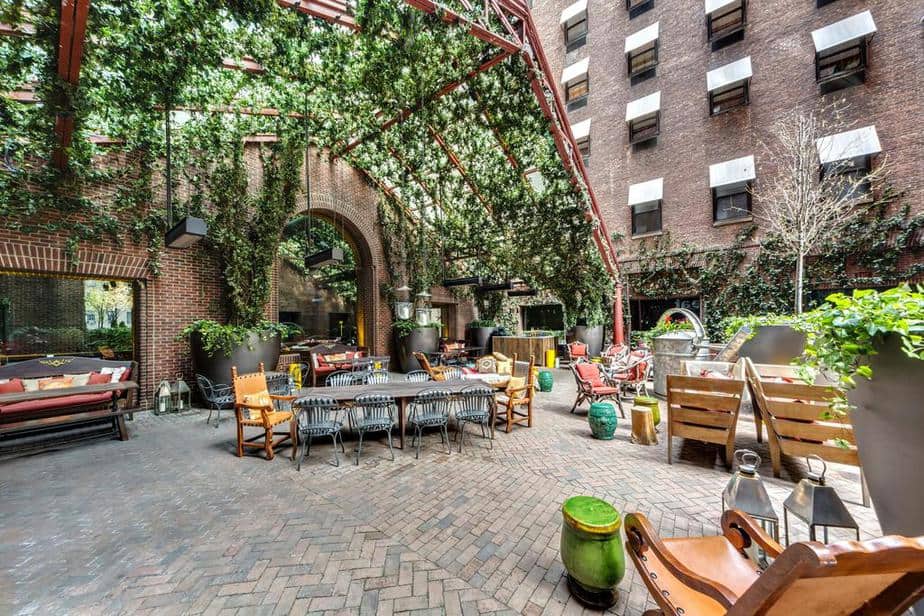
09. Service and Operational efficiency
As many move towards the Smart Hotel model in which technology takes centerstage, it is crucial that each hotel decides how this will impact on the overall service and operations.
Consider, would the hotel guests prefer to be met by a friendly face and a personal touch or is time of the essence and would online check-in and an app-based key card be preferred? This will play a major part in deciding elements of the lobby design. Is a front desk an important component of the lobby or will roving team members and areas with touch screen technology that puts the power in the guests’ hands be the best way to cater to the needs of the clients?
The Inn at St Botolph in Boston gives guests complete autonomy over their stay, providing a code by email that guests can use to enter their rooms without meeting with a single staff member if that is their preference. Allowing guests to make these choices for themselves gives guests the freedom to tailor their hotel experience to suit themselves and provides a modern alternative to check-in queues and clunky processes.
Looking for more inspiration?
Discover how we're redesigning hotels post COVID-19
Hotel Design Post-Pandemic